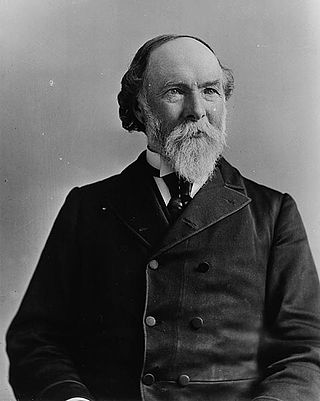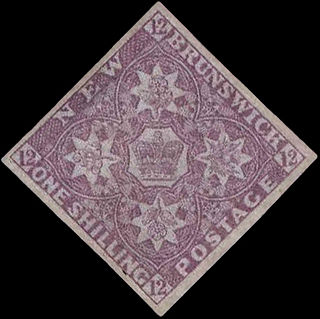
The postal and philatelic history of Canada concerns postage of the territories which have formed Canada. Before Canadian confederation, the colonies of British Columbia and Vancouver Island, Prince Edward Island, Nova Scotia, New Brunswick and Newfoundland issued stamps in their own names. The postal history falls into four major periods: French control (1604–1763), British control (1763–1841), colonial government control (1841–1867), and Canada, since 1867.

British North America comprised the colonial territories of the British Empire in North America from 1783 onwards. English colonisation of North America began in the 16th century in Newfoundland, then further south at Roanoke and Jamestown, Virginia, and more substantially with the founding of the Thirteen Colonies along the Atlantic coast of North America.
This is a partial timeline of significant events in postal history, including dates and events relating to postage stamps.

Andrew Archibald Macdonald, served as the fourth Lieutenant Governor of Prince Edward Island from 1 August 1884 to 2 September 1889, and was one of the fathers of Canadian Confederation.

Events from the year 1783 in Canada.
This is a timeline of the history of piracy.

The Great Coalition was a grand coalition of political parties that brought an end to political deadlock in the Province of Canada. It existed from May 1864 until Confederation in 1867.
Michael Hamilton Foley was a lawyer and political figure in Canada West.

Starting with the 1763 Treaty of Paris, New France, of which the colony of Canada was a part, formally became a part of the British Empire. The Royal Proclamation of 1763 enlarged the colony of Canada under the name of the Province of Quebec, which with the Constitutional Act 1791 became known as the Canadas. With the Act of Union 1840, Upper and Lower Canada were joined to become the United Province of Canada.

The Minister for Defence of Sweden is a member of the Government of Sweden. The Minister heads the Ministry for Defence and is appointed and dismissed at the sole discretion of the prime minister of Sweden.

The Randolph family of Virginia is a prominent political family, whose members contributed to the politics of Colonial Virginia and Virginia after statehood. They are descended from the Randolphs of Morton Morrell, Warwickshire, England. The first Randolph in America was Edward Fitz Randolph, who settled in Massachusetts in 1630. His nephew, William Randolph, later came to Virginia as an orphan in 1669. He made his home at Turkey Island along the James River. Because of their numerous progeny, William Randolph and his wife, Mary Isham Randolph, have been referred to as "the Adam and Eve of Virginia". The Randolph family was the wealthiest and most powerful family in 18th-century Virginia.

This is a survey of the postage stamps and postal history of New Brunswick.

Section 68 of the Constitution Act, 1867 is a provision of the Constitution of Canada relating to the seats of government of the four original provinces, New Brunswick, Nova Scotia, Ontario and Quebec.









